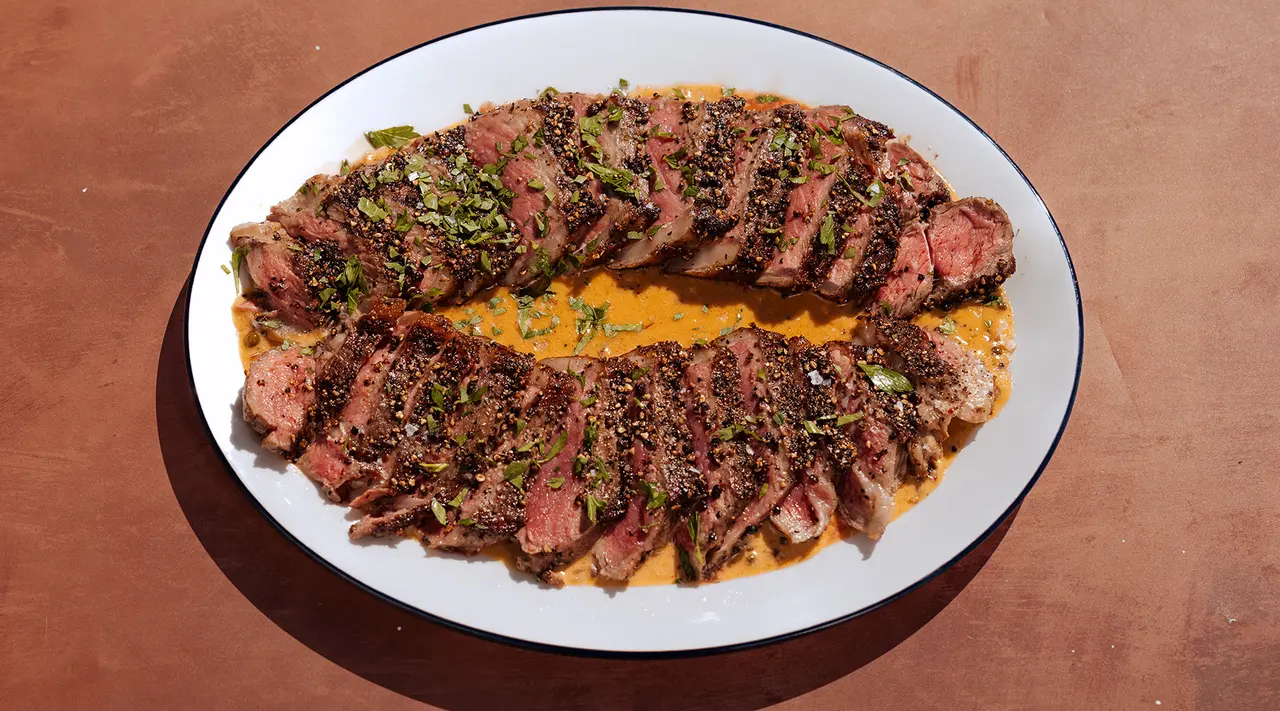Why is pepper such a perfect seasoning staple? And why does it make food taste so delicious? Here’s the lowdown on salt’s second in command.
Ever wonder: what’s the perfect culinary pairing? Forget about peanut butter and jelly, ham and cheese, and Jack and Coke. Salt and pepper trumps them all. The savory meets spicy mash-up is as elementary as it gets. But despite having a place on practically every dinner table, salt steals the spotlight in this dynamic duo.
To speed things up, we’re skipping the obligatory praise of salt and its oh-so-amazing seasoning effect. Instead, we’re shining a solo light on pepper, the darker cousin with its gloriously zesty, exotic, pungent flavor. What’s the best kind of pepper for my dish? And why does it taste so good after all? Read on to discover all the delectable benefits of the peppercorn and its many varieties.
Pepper: Why So Powerful?
With roots in ancient India, pepper has continued to thrive as a cooking essential for millennia. Countless centuries and culinary trends later, home cooks have mastered the art of seasoning, pairing certain types of peppercorns with compatible styles of cuisine. Here’s a prep your pepper recap.
Table Pepper 101
- Choose your type – Although all peppercorns come from a leafy, flowering bush, there are 3 distinct kinds: black, white and green. Color and subsequent flavor are dependent on the bush’s berry and the manner in which it was picked and prepared.
- Select your texture – When used as a typical spice in a recipe or atop a finished dish, peppercorns may be served whole, cracked or ground. Some store-bought shakers come with a grinder built in, giving you precise control over the fineness of the flake. You can also purchase a gourmet gadget online or in your favorite store.
- Decide your dose – A healthy spoonful—or just a dash? Depending on the nature of the recipe, be mindful of how much you use. Everyone knows that too much salt can destroy a dish, and it's the same case with pepper. When used together in the right quantity, S+P should make the dish taste 'more like itself.' So grind that shaker to a halt.
Photo: Sonja Punz
What kinds of pepper are there?
Although variations of the spice abound, most types are expressed according to color, with black, white, and green being the most prominent. These types also break down into other hard-to-find sorts including pink and red peppercorns.
Black peppercorn—the mother of all berries
Most at-home chefs stick with standard black pepper thanks to its incredible versatility. Black pepper is used in all forms—whole, cracked and ground, and its hot, piquant flavor is more powerful and complex than its white and green counterparts. This makes it perfect for jazzing up otherwise boring, muted dishes devoid of that ‘big’ taste we all crave. Chefs also say it adds a necessary pungent punch to recipes that may seem too heavy or sweet.
We recommend using the whole peppercorn when seasoning stocks for soup, pickling vegetables and similar treats, and flavoring other liquid-based dishes. Freshly cracked pepper is best served with meats like steak, chicken, and pork, and for all other fare, go with ground.
White peppercorn—what a wonder
Why do we always forget about this fantabulous finisher? White pepper is all the rage overseas, but for some reason, Americans prefer black. Advanced palates prefer white pepper for its outrageous spiciness ( maybe more than the best kind of hot sauce...), but when it comes to complexity, it sometimes falls short. That said, the main reason for walking on the white side is rather superficial.
For creamy sauces and soups, mashed potatoes, fish and other light-colored plates, white pepper proves an aesthetically pleasing addition. The downside? You can’t crack this corn. It only comes in ground or whole form, so your options are somewhat limited.
Go green—or go home
Like to spruce up food with something unexpected? Green peppercorns are prepared a bit differently, resulting in some really interesting applications. This variety is only available freeze-dried or pickled in some kind of brine. These processes allow the spice to retain its vivid coloring and supple texture, unlike the dried-out whites and blacks.
The flavor? Green peppercorns are just as scrumptiously zesty and tart at the start, but after a second, the taste dies down. This makes them less threatening than other kinds of pepper—perfect for picky eaters, or perhaps kids with growing palates. Green pepper is often used in curries, sauces, seafood, as well as a number of Thai and other Eastern cuisines.
Learned a lot about this practically perfect tabletop treasure? There are plenty of others to explore, so keep moving on your culinary journeys. Check out our piece on Pepper’s companion, salt.
























